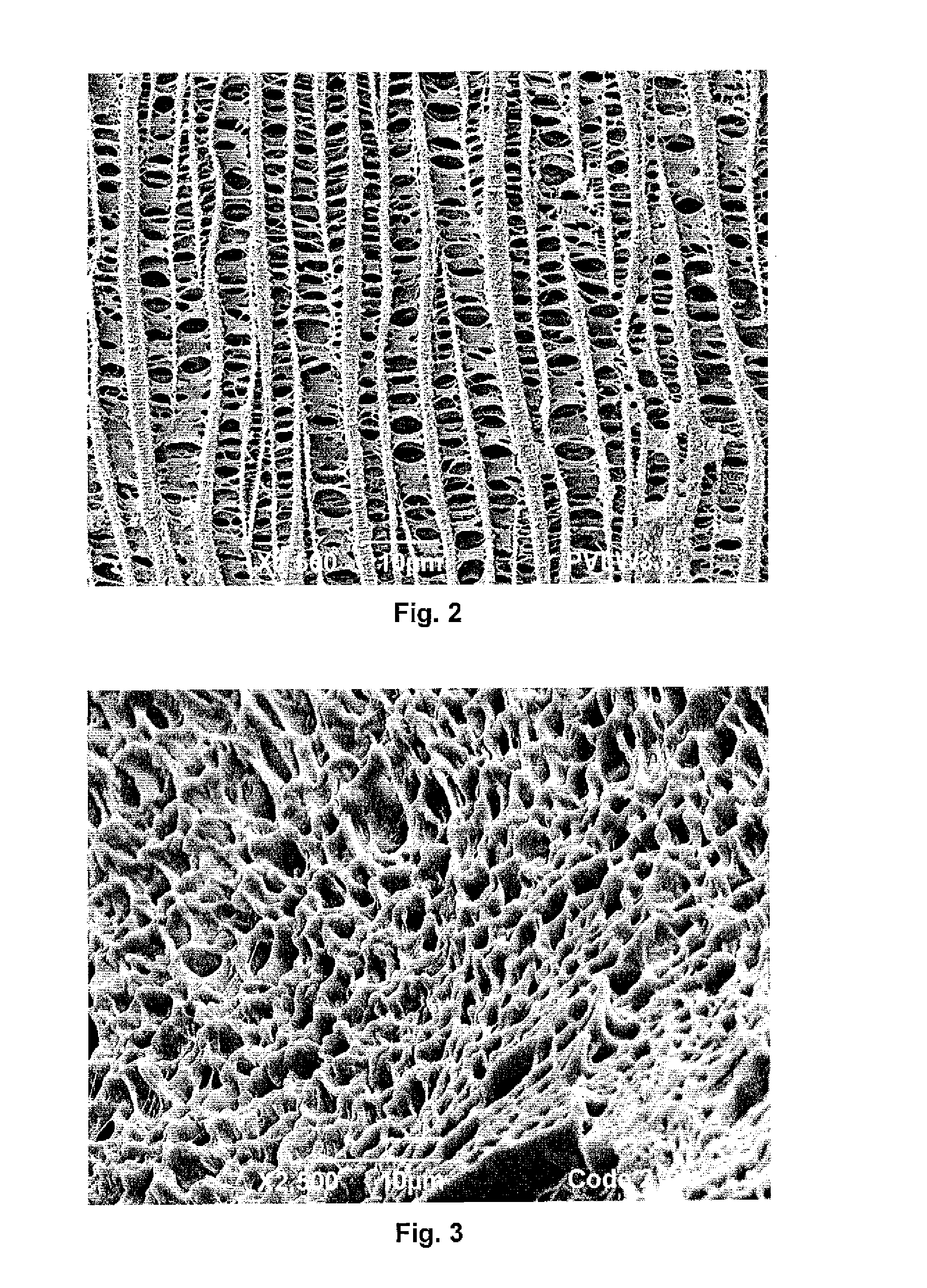Renewable Polyester Compositions having a Low Density
a technology of renewable polyester and composition, applied in the field of renewable polyester compositions having a low density, can solve the problems of limited market penetration of renewable polyester, high cost, and often formed molding materials of synthetic polyolefins
- Summary
- Abstract
- Description
- Claims
- Application Information
AI Technical Summary
Benefits of technology
Problems solved by technology
Method used
Image
Examples
example 1
[0097]A precursor material was formed from injection molded samples by extruding PLA 6201D (Natureworks®, melt flow rate of 10 g / 10 minutes at 190° C.) into an injection molded doge bone bar. When attempted to be cold drawn at 50 mm / min draw rate (87.7% / rnin), the bar failed at just about 3% elongation.
example 2
[0098]A precursor material was formed by injection molding of a dog bone shaped bar from a blend of 88.7 wt. % polylactic acid (PLA 6201D, Natureworks®), 9.9 wt. % of a toughening additive and 1.4% polyepoxide modifier. The toughening additive was VISTAMAXX™ 2120 (ExxonMobil), which is a polyolefin copolymer / elastomer with a melt flow rate of 29 g / 10 min (190° C., 2160 g) and a density of 0.866 g / cm3. The polyepoxide modifier was poly(ethylene-co-methyl acrylate-co-glycidyl methacrylate) (LOTADER® AX8950, Arkema) having a melt flow rate of 70-100 g / 10 min (190° C. / 2160 g), a glycidyl methacrylate content of 7 to 11 wt. %, methyl acrylate content of 13 to 17 wt. %, and ethylene content of 72 to 80 wt. %. The polymers were fed into a co-rotating, twin-screw extruder (ZSK-30, diameter of 30 mm, length of 1328 millimeters) for compounding that was manufactured by Werner and Pfleiderer Corporation of Ramsey, N.J. The extruder possessed 14 zones, numbered consecutively 1-14 from the feed ...
example 3
[0100]A precursor material was formed by injection molding of a dog bone shaped bar from a blend of 85.3 wt. % polylactic acid (PLA 6201D, Natureworks®), 9.5 wt. % of VISTAMAXX™ 2120 (ExxonMobil), 1.4 wt. % polyepoxide modifier (LOTADER® AX8900, Arkema), and 3.8 wt. % internal interfacial modifier (PLURIOL® WI 285 Lubricant from BASF). The PLURIOL® WI285 was added via injector pump into barrel zone #2. Injection molded bars were formed from the blend as described in Example 2. The injection molded bars were initially extended to failure and demonstrated a deformation to break of more than 120%, which was beyond the limits of testing apparatus. During extension testing, the material initially stress whitened uniformly and homogeneously followed by localized necking around deformations of about 100% extension.
[0101]After testing the extensibility of the precursor material to failure, the precursor material bar was drawn to 50% elongation at a draw rate of 50 mm / min (87.7% deformation / ...
PUM
| Property | Measurement | Unit |
|---|---|---|
| density | aaaaa | aaaaa |
| glass transition temperature | aaaaa | aaaaa |
| density | aaaaa | aaaaa |
Abstract
Description
Claims
Application Information
 Login to View More
Login to View More - R&D
- Intellectual Property
- Life Sciences
- Materials
- Tech Scout
- Unparalleled Data Quality
- Higher Quality Content
- 60% Fewer Hallucinations
Browse by: Latest US Patents, China's latest patents, Technical Efficacy Thesaurus, Application Domain, Technology Topic, Popular Technical Reports.
© 2025 PatSnap. All rights reserved.Legal|Privacy policy|Modern Slavery Act Transparency Statement|Sitemap|About US| Contact US: help@patsnap.com



